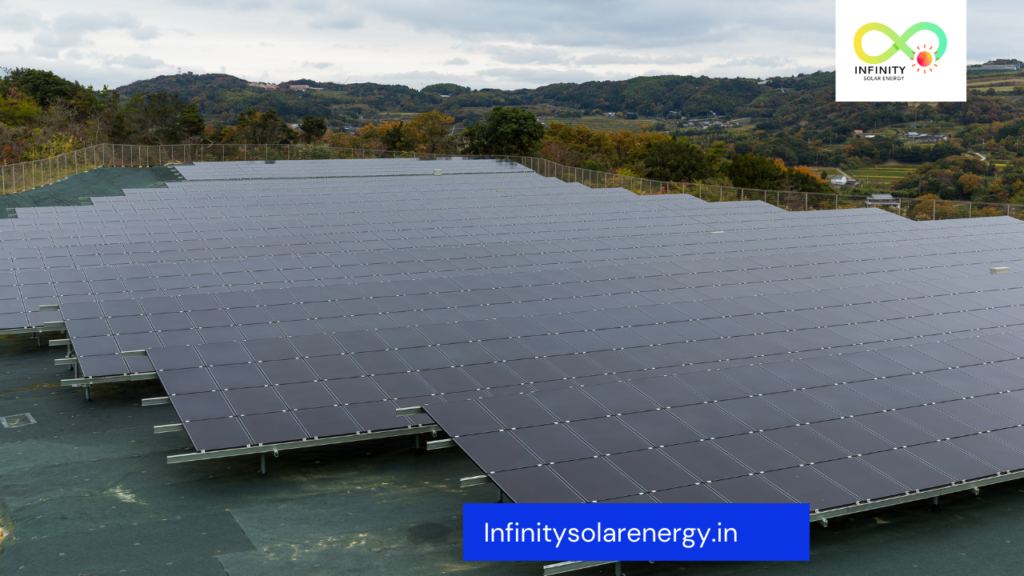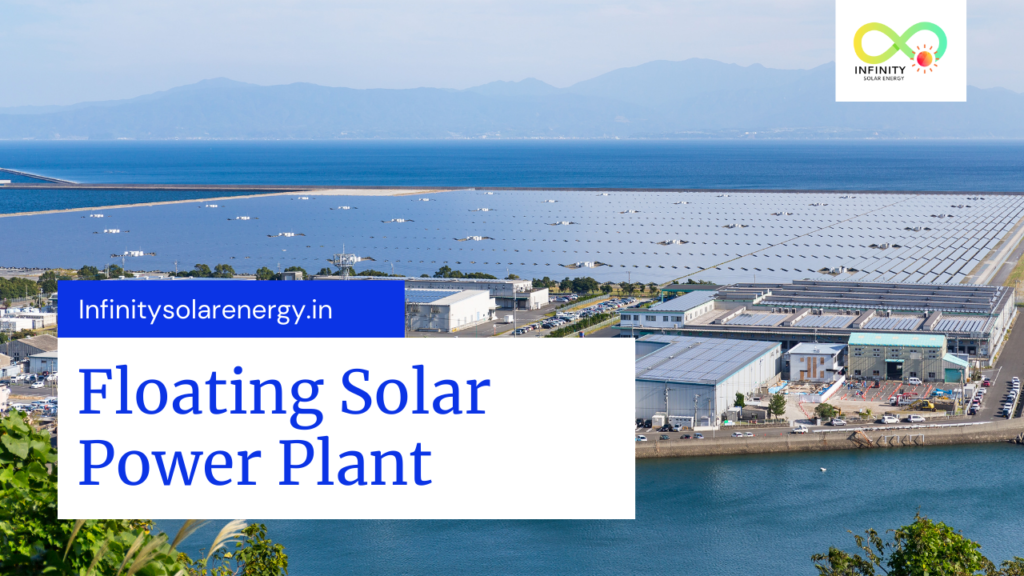The National Thermal Power Corporation Limited (NTPC) is building India’s largest floating solar power plant by generation capacity (100MW) at Ramagundam in Telangana’s Peddapalli district.
Floating Solar Plants: This term refers to the installation of photovoltaic panels mostly on water’s surface. With applications in India, they offer a viable alternative to land-based solar arrays.
The Southern Region has a high number of important reservoirs, which presents a tremendous possibility to use renewable energy in the floating solar technique.
What are floating solar panels || Floating Solar Power Plant
Floating solar panels are solar panels that are used on water surfaces. Since they do not require any external support, they are simpler to set up. Furthermore, since they are smaller, they can be erected in places not accessible by road or remote areas without the need for excavation. Furthermore, these are also low-cost panels compared to standard ones. The solar panels are installed on floating structures known as barges or platforms.
Typically, these float in the water and are anchored to the main structure by anchors or hydraulic cylinders that are hydraulically released by remote control. The energy they generate can either be transferred to the grid or stored on-site, with the former being the most common.
The key benefits of floating solar power plants || floating solar power plant
Solar energy is a significant factor for mitigating the considerable dependence on fossil fuels. This makes floating solar plants a promising new trend for renewable energy generation. Floating solar power plants offer numerous advantages over other forms of solar energy. Temperatures (including light) of the reservoir water can be reduced, which will lead to higher penetration of solar energy by converting solar energy into electricity.
The technology deployed in these plants can be easily tweaked to conform to the specific location, such as terrain, topography, and water depth. These solar plants are more efficient than traditional solar power plants due to the high angle of exposure to sunlight. At the same time, existing installations still depend on the high angle, mostly less than 30 degrees.
Floating solar power plants in India || floating solar power plant

A consortium consisting of Sterlite Power Grid Ventures Ltd., and Resolve Energy Infrastructure Ltd., through their respective wholly-owned subsidiaries, have set up a solar power plant with a capacity of 100MW at Kondapalli reservoir, Chhattisgarh. The solar plant of 18 MWp is planned for four months—this project is of enormous significance and immense economic benefit to the nation.
International Solar Alliance At the launch of the International Solar Alliance, India has recently pledged an annual contribution of USD 2 billion by 2030. The union government believes that investment in infrastructure by private players like Resolute Energy and Endeavor Energy will play a significant role in leveraging the untapped potential of solar energy in the country.
The future of Clean Energy || floating solar power plant
The current scenario of India is pretty exciting. India has sizeable solar energy potential. Now, it has to prove that it can use this energy efficiently. The power generated through renewable energy is affordable, and therefore they are in higher demand. Because of this, the global competition to tap the solar energy potential has never been so challenging. There are many potential projects in various parts of the country that could change the narrative in the solar energy space in India.
To take on the technology challenges, the Department of Atomic Energy (DAE), Ministry of Environment, Forests and Climate Change (MOECC) has undertaken a range of initiatives.
Conclusion
Floating solar power plant is already witnessing an upsurge in India due to the growing interest of Indian government to address its climate change and energy security issues.
The fact that 30% of the national energy requirement is met by renewable sources (wind, solar, and biofuels) makes it the ideal nation for deploying floating solar power plants.


Pingback: Solar pond || A brief guide for the upcoming thermal energy applications 4 people | Infinity Solar Energy || Best Rooftop Solar in Lucknow || Solar in Uttar Pradesh